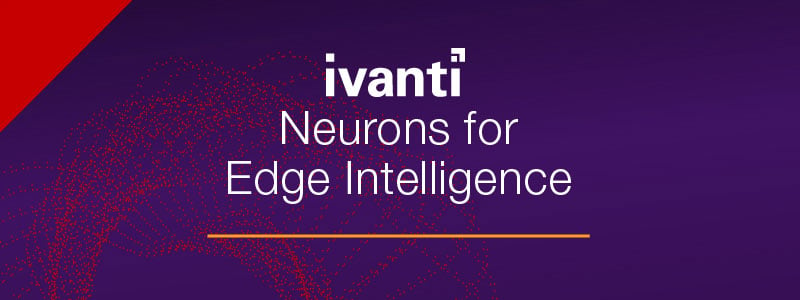Ivanti Neurons for Edge Intelligence for Our Fast-Changing Future
 The demands on enterprise IT are set to grow exponentially.
The demands on enterprise IT are set to grow exponentially.
The Edge Comes into View
Edges. Many times, they represent an unknown—like the edge of space or a horizon for sea captains and pilots. And they give us mixed feelings—fear, anxiousness, direction, a sense of adventure. Most often, they represent a future state or location we are moving towards.
For IT there is a new edge. The Edge of computing. The place where things and people are connecting with our networked digital world. Devices of all kinds, the next generation of workers, automated bot assistants! And as IT professionals, that future place or state is rapidly coming into view. It’s predicted that 41.6 billion connected devices, or “things,” will be generating 79.4 zettabytes (ZB) of data by 2025 .
This rapid growth creates IT complexities in the forms of ongoing management and integration challenges, which not only affect devices but IT staff and end-user experiences. You might be asking how your IT team will adapt. What could you do if you were connected at the Edge?
Life on the Edge
Ivanti’s solution to these questions? One way is to help organizations mature from basic automation to a fusion of hyper-automation and deep learning capabilities. With this, organizations can self-heal and self-secure devices, and self-service end-users proactively, predictably, and continuously.
Ivanti Neurons for Edge Intelligence leverages our hyper-automation platform approach, making it easy for today’s IT Analyst to query all devices, in seconds, to get real-time insights, connecting them with users and devices from cloud to edge. And smart dashboards provide quick operational awareness to provide real-time insights that can lead to immediate action.
A Case for Edge Intelligence
Consider the following example. If company employees were experiencing excessive logon times to their devices, which hurts productivity, how would you know unless they submitted a ticket? Would you be able to determine whether this is an isolated event, or a larger systematic issue without a surge in help desk requests? With Edge Intelligence, you’d receive logon-time breakdowns across all on-prem, cloud, and edge devices. You’d see if the incident was singular or happening company-wide and be able to take the proper actions quickly to remediate.
In this actual enterprise example, the cause of excessive logon times was identified as single-threaded logon scripts and many Group Policies being used for desktop configuration. Quickly identifying and fixing the issue improved logon times to just seconds instead of minutes.
Wrapping Up
As it seems with emerging technologies, we’ve heard a lot about the future of the Edge over the years. Well, the Edge is now in sight.
Organizations can benefit greatly from Edge Intelligence and the power of hyper-automation. Accurately and quickly identifying the issues and moving to swift remediation reduces costs and improves IT teams and end-user experiences. In short, it’s a competitive advantage by limiting loss of productivity within your organization.
I asked myself the other day—do I have any IoT Edge devices at home? I had never given much thought to it, and I surprised myself by identifying four such devices, which was 25% of all my connected devices in my home. All connected to the same network I connect to every day while working from home. The growth is real.
Next Steps
Learn more and see Ivanti Neurons for Edge Intelligence in action here.
